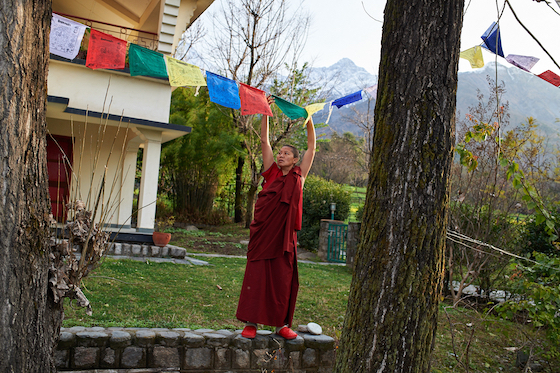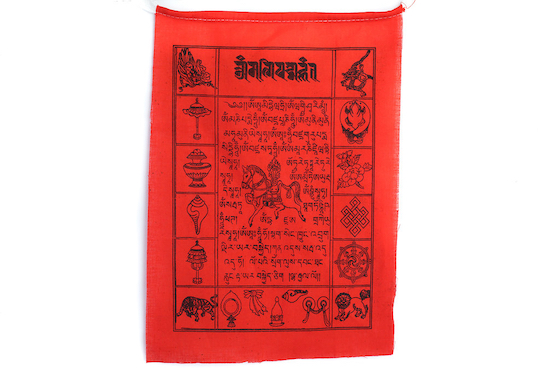Tibetans give white scarves or kataks on many occasions. This blog post answers common questions about this beautiful and ancient practice.
What is the meaning of the Tibetan scarf or katak?
A katak is a traditional Tibetan ceremonial scarf offered as a sign of respect, gratitude, or greeting. The Tibetan word is ཁ་བཏགས་ and in English it is also spelled khata or khatak.
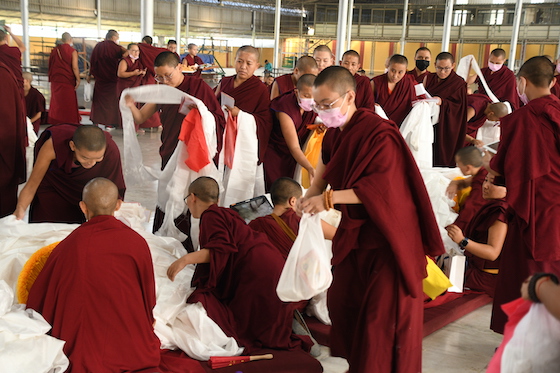
Tibetan Buddhist nuns offer kataks to nuns who have just graduated with their Geshema degrees, a degree roughly equivalent to a PhD. Offering a katak is a sign of respect. Photo by the Dolma Ling Media Nuns
Kataks are offered for many occasions including births, weddings, funerals, graduations, and the arrival or departure of guests. When given to a guest it symbolizes welcome and to a person departing it conveys wishes for a safe journey.
It is also a Tibetan practice to put kataks over thangka paintings, statues, altars, as well as photos of His Holiness the Dalai Lama and reincarnated lamas or rinpoches. Bringing a katak when visiting a temple, shrine, guru, or teacher shows gratitude for the kindness of your teacher and the gems of their teachings.
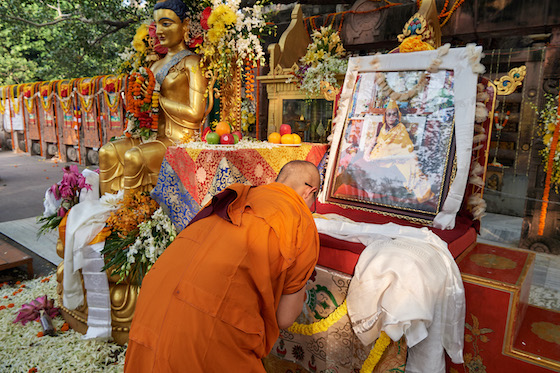
A Tibetan Buddhist nun offers a katak to a portrait of His Holiness the Dalai Lama in the holy city of Bodh Gaya. Photo by Olivier Adam
With its many uses, a Tibetan katak is akin to flower garlands or leis common in Hawaii and Polynesia which are given as a sign of peace, love, honor, or friendship. Leis, like kataks, are also offered to visiting dignitaries, graduates, and loved ones who are departing on a journey.
Kataks are used in Tibet and throughout the Tibetan diaspora as well as across many Himalayan communities with strong ties to Tibet and its culture, including Nepal, Bhutan, Sikkim, Ladakh, Himachal Pradesh, and Arunachal Pradesh.
How Do You Offer a Katak?
To prepare for offering a katak, fold it lengthwise into a double layer. This represents interdependence. Next, fold the scarf into seven folds and roll the remainder over the folded part into a loose roll, unfurling it before you offer it. It is helpful to have two people to stretch out the katak and do the folding and rolling together. Traditionally, Tibetans then carefully tuck the katak into the upper portion of their chubas (traditional Tibetan clothing) ready for offering.
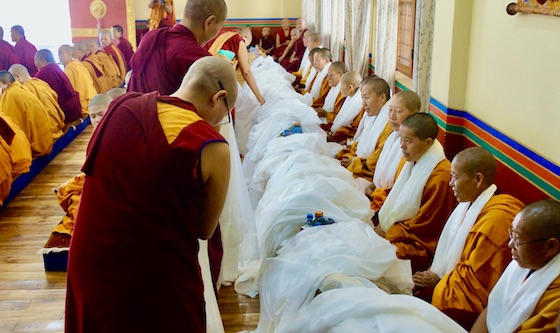
Graduating nuns at Shugsep Nunnery and Institute are surrounded by mountains of kataks at their graduation ceremony on October 2022.
When you are offering a katak to a Buddhist teacher, lama, elder, or dignitary, you should hold the scarf in both hands. The folded section of the katak should face towards you and the open edges should face the teacher or elder, representing your open pure heart.
While holding the katak in both hands, join your palms together in respect and bring your folded hands above your head or to your forehead and make a reverent bow, bending 90 degrees at the waist. When you are presenting a katak to a Buddhist teacher, unlike with arriving or departing guests, you do not put the katak over the neck of the person being honored. The teacher or lama will receive the katak and then, as a blessing, will usually return it to you the giver by placing it over the your own neck.
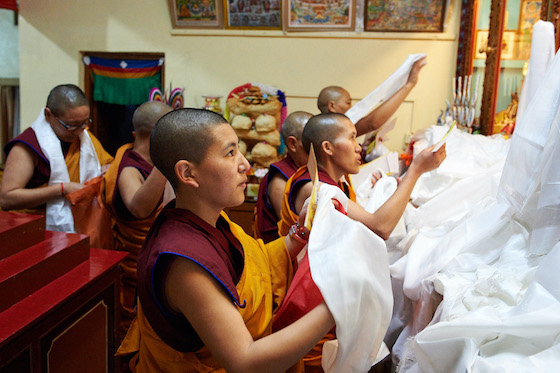
Nuns at Dolma Ling offer kataks at the altar during Losar, Tibetan New Year. Photo courtesy of Olivier Adam.
Tibetans consider a katak to be a very important gift. For instance, is traditional to offer a katak to a Buddhist teacher after the last session of a teaching often with dana, a monetary offering in an envelope. You should always treat kataks with respect. Never let them touch the floor or ground.
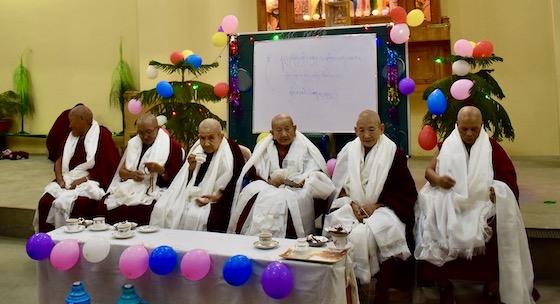
At a party in their honor, the senior nuns at Geden Choeling Nunnery are draped with kataks, the traditional ceremonial white scarves offered by Tibetans.
The Colors and Patterns of Kataks
The most common color of a katak is white. White is a symbol of purity, auspiciousness, sincerity, kindness, and justice. Ivory kataks are also very common.
The ends of a katak have fringes or tassels. The ashi katak is the most commonly used type. It is simpler and has a single layer of tassels. Nangzö kataks, like the ones sold in the Tibetan Nuns Project online store, are much longer, wider, and have a double layer of tassels. Nangzö kataks are generally reserved for very important occasions, such as the enthronement of high lamas or for diplomatic occasions.
His Holiness the Dalai Lama gave this explanation of the traditional Tibetan white scarf when he presented a katak to the Mayor of Vilnius. He said, “I want to explain the significance of this scarf. I usually describe the colour white meaning warm-heartedness, honest and true. The smooth texture of the scarf represents your non-violent behavior. If possible try to help others, if not at least don’t harm them.”
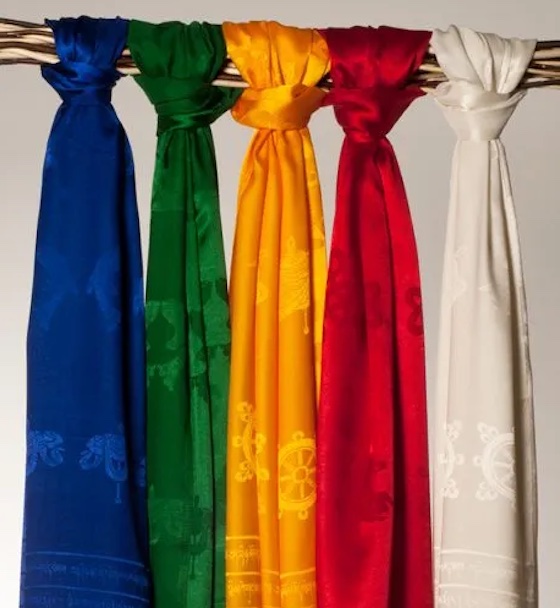
The Tibetan Nuns Project online store sells special long silk kataks blessed by Tibetan Buddhist nuns. Each katak has mantras and the eight auspicious Buddhist symbols woven into the fabric.
Kataks also come in colors representing the five elements, as with Tibetan prayer flags. Blue symbolizes the sky and space, white symbolizes the air and wind, red symbolizes fire, green symbolizes water, and yellow symbolizes earth.
The Meaning of the 8 Auspicious Symbols of Buddhism
Each of the kataks sold in the Tibetan Nuns Project online store has mantras and the eight auspicious symbols of Buddhism woven into the pattern. These 8 symbols represent the offerings made to the Buddha when he attained enlightenment. Their meanings are deep but here is the basic meaning of each symbol.

Eight Auspicious Signs of Buddhism: (From top, left to right): The precious parasol or umbrella, the pair of golden fish, the white conch shell, the vase of great treasures, lotus, the eternal or infinite knot, the victory banner, and the dharma wheel. Hall of Fame, Leh Source: Wikicommons.
– The Precious Parasol represents protection from suffering. All take refuge in the dharma under the auspiciousness of the parasol.
– The Two Golden Fish symbolize living beings who practice the dharma in a state of fearlessness without danger of drowning in the ocean of suffering or samsara.
– The Vase of Great Treasures symbolizes health, long life, wisdom and prosperity. It also symbolizes the Buddha’s infinite quality of teaching the dharma: no matter how many teachings he shared, the treasure never lessened.
– The Lotus Flower has its roots in the mud but its flower lies immaculate above the water and thus it represents the primordial purity of body, speech, and mind, floating above the muddy waters of attachment and desire.
– The White Conch Shell represents the deep and beautiful sound of the dharma reaching far and wide, awakening beings from the slumber of ignorance.
– The Eternal Knot signifies both cause and effect and the union of compassion and wisdom.
– The Victory Banner represents the Buddha’s victory over the four māras, or hindrances in the path of enlightenment: pride, desire, disturbing emotions, and the fear of death.
– The Eight-Spoked Dharma Wheel represents the eight-fold path of virtuous actions directed towards enlightenment.

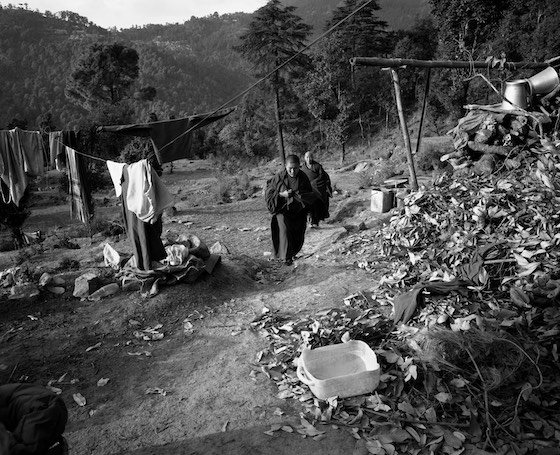
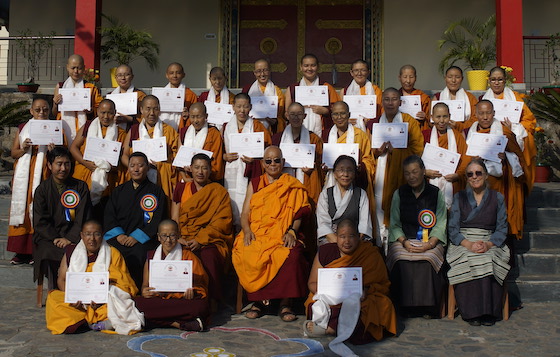

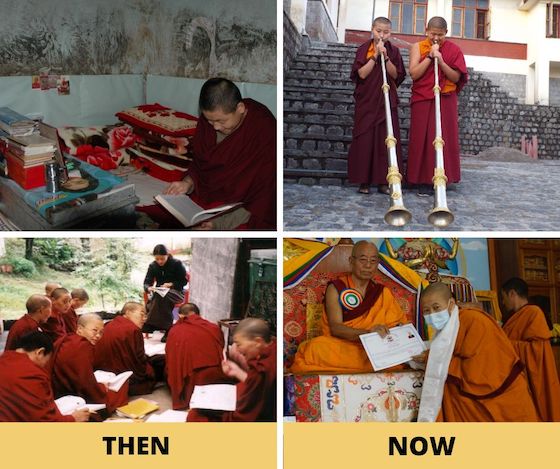
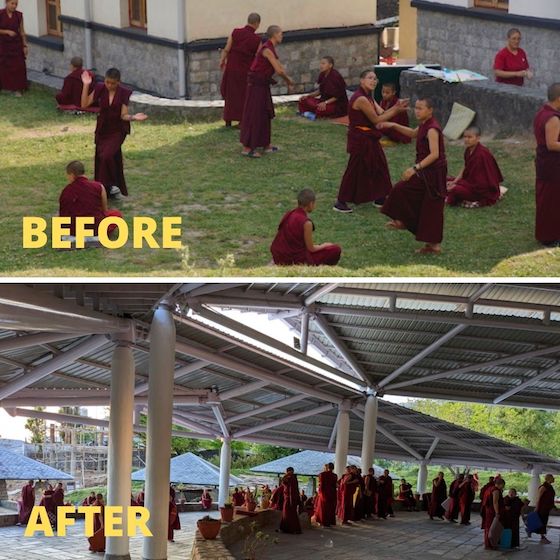


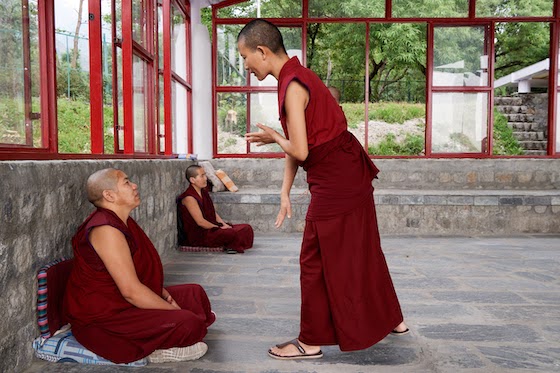
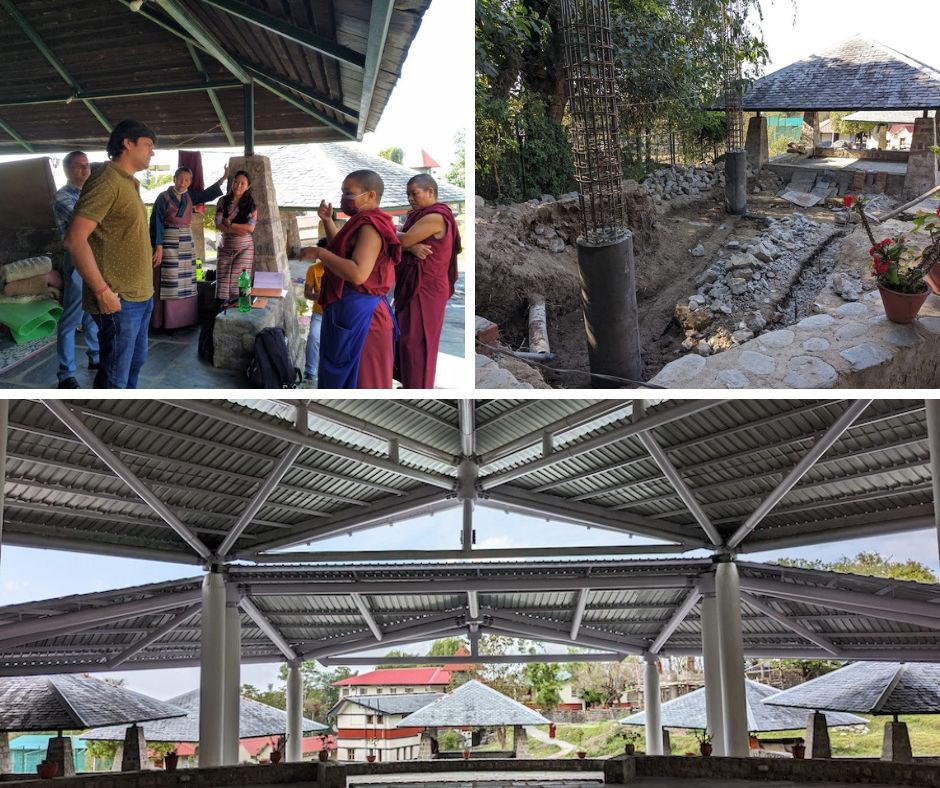
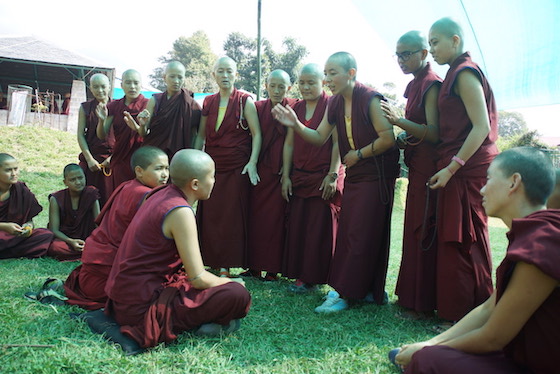
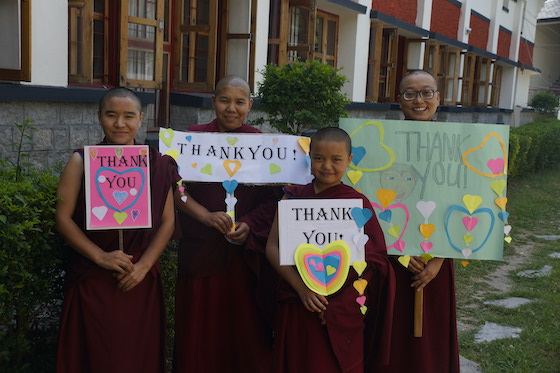
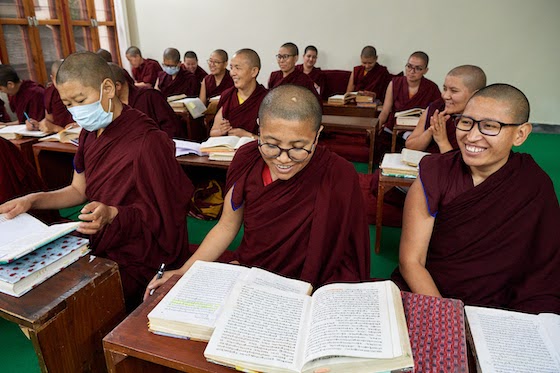
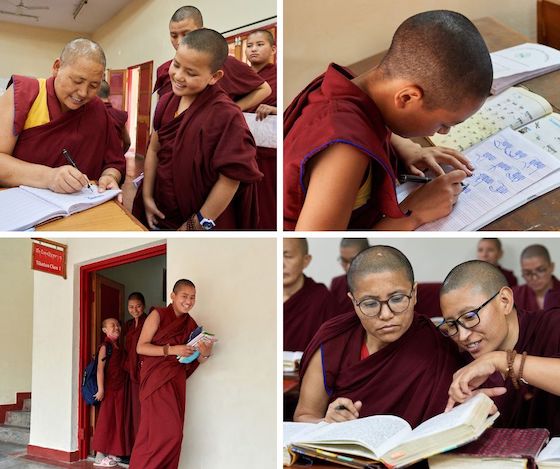
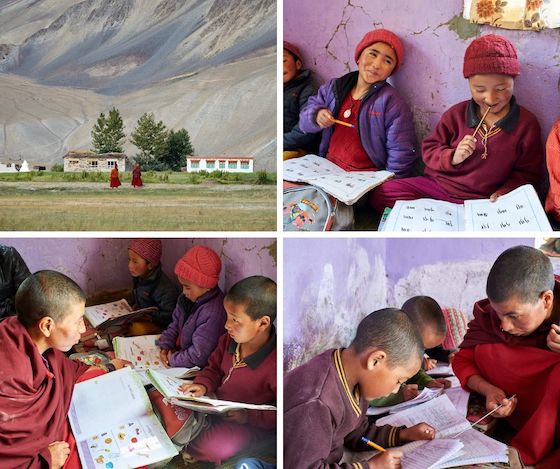
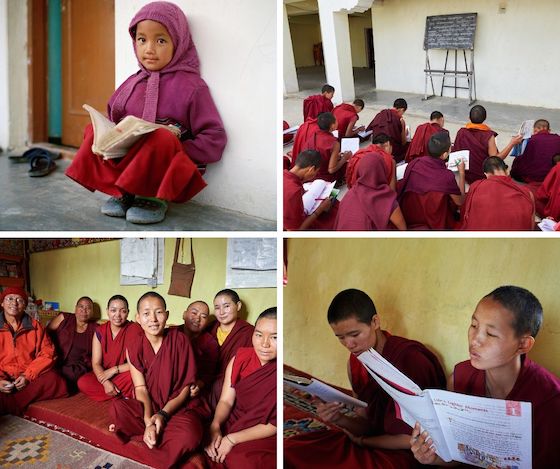
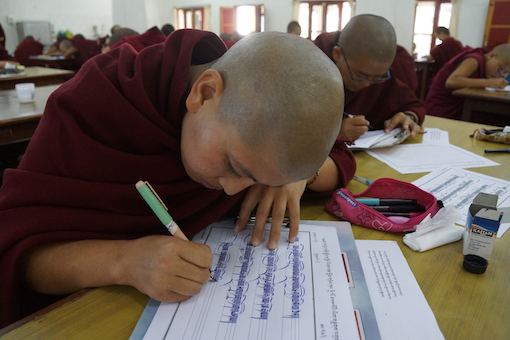
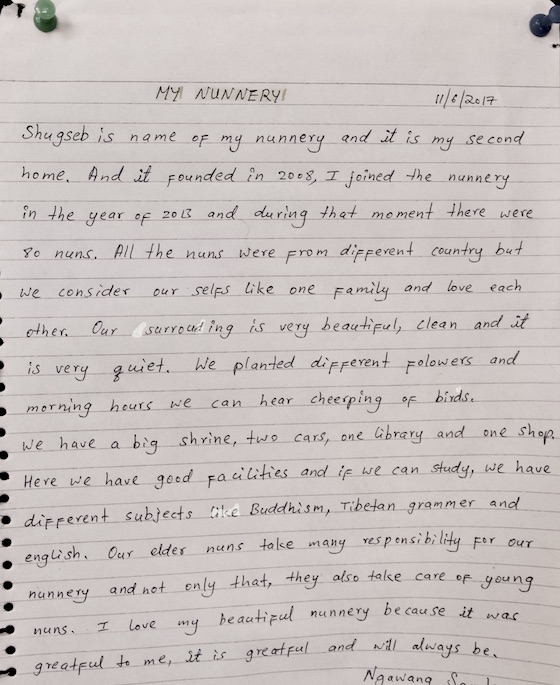
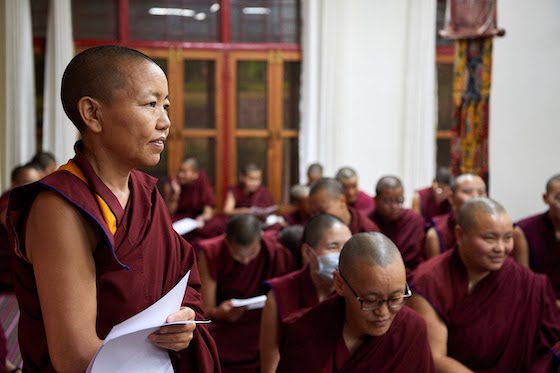
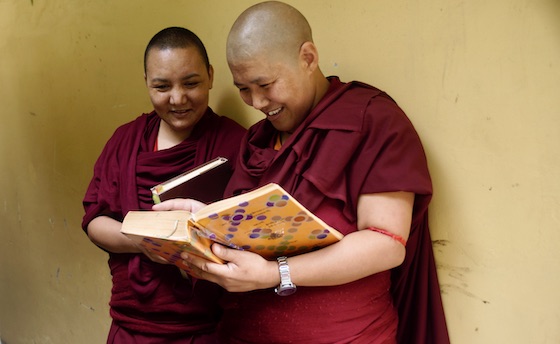
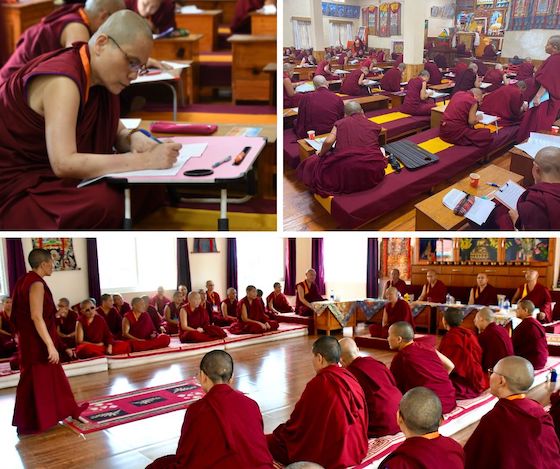
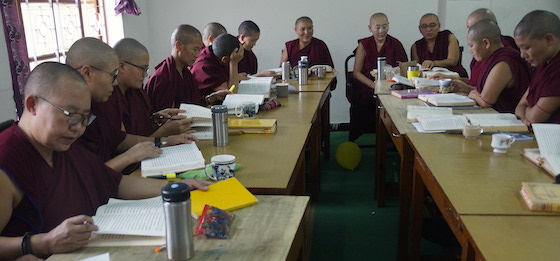
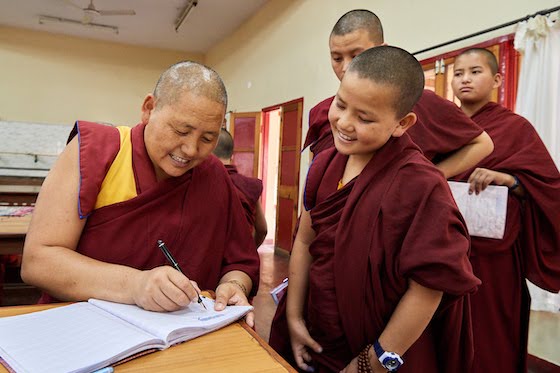
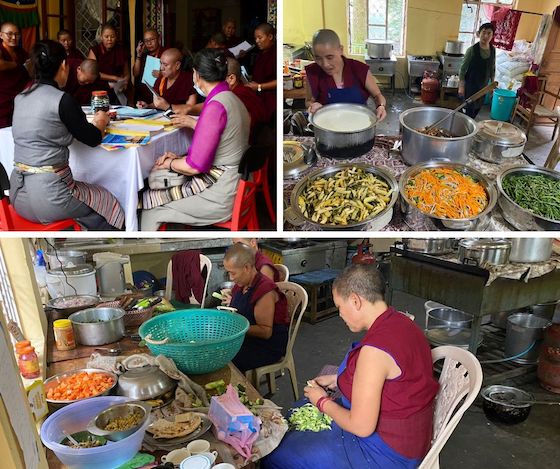

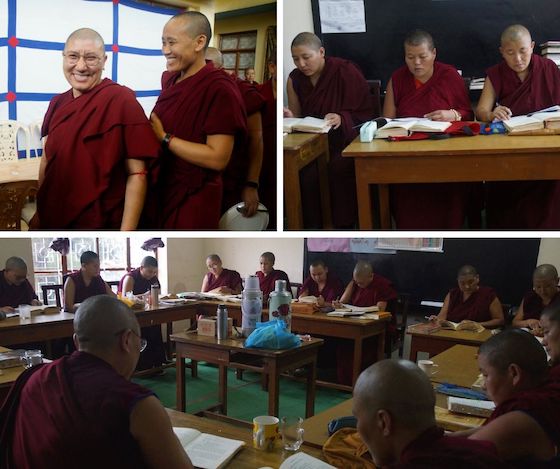
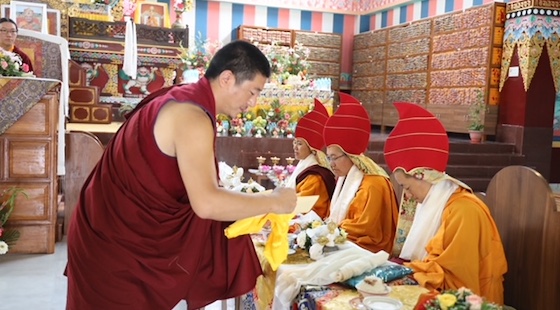 The Khenmo degree for nuns, like the
The Khenmo degree for nuns, like the 
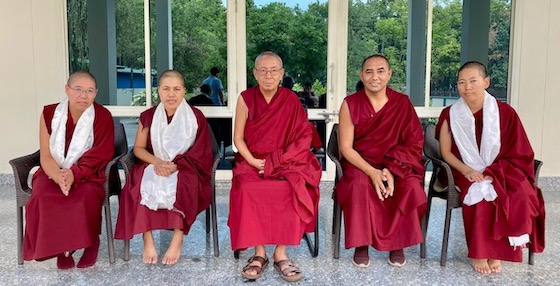
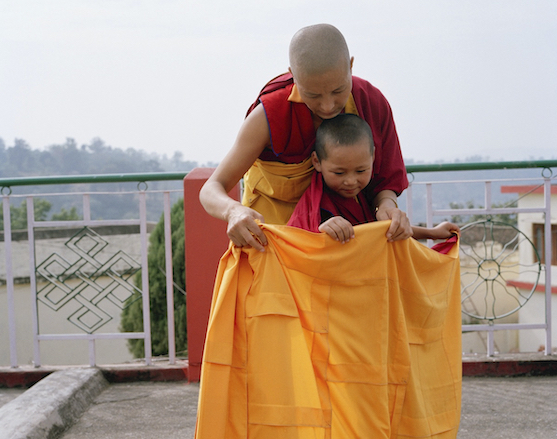
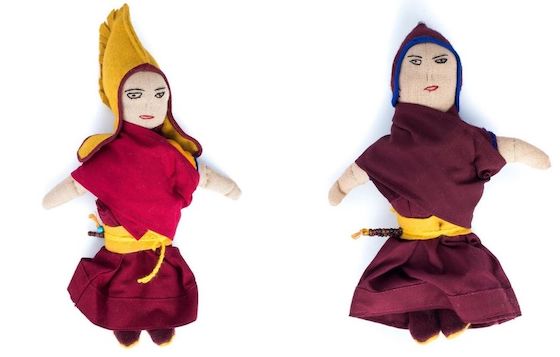
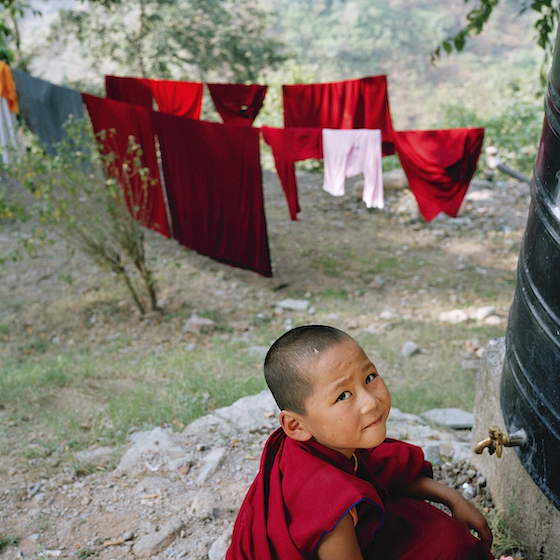
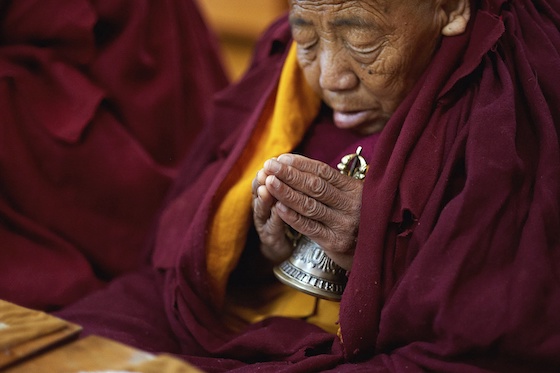
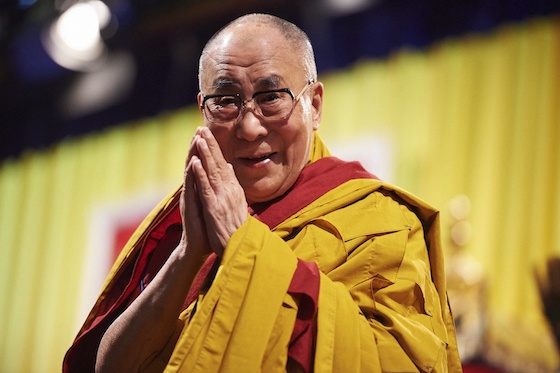
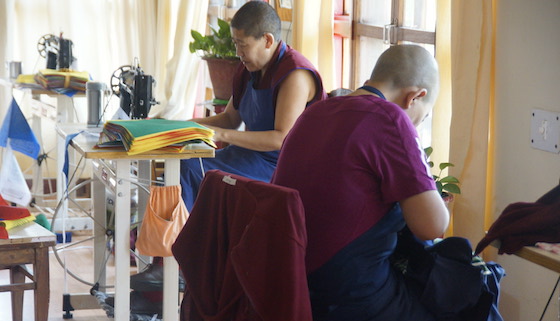
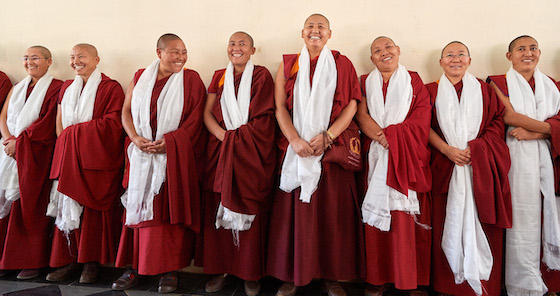
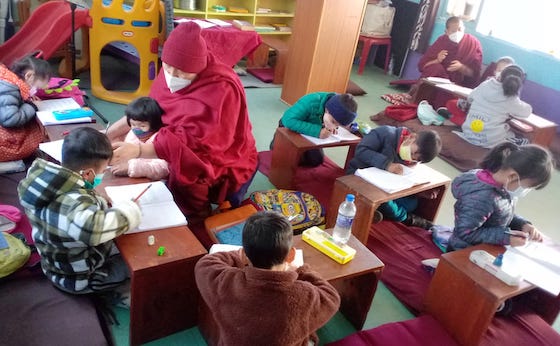
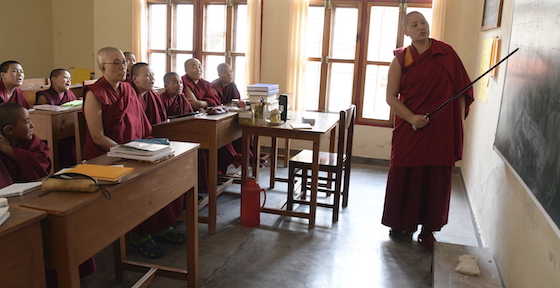

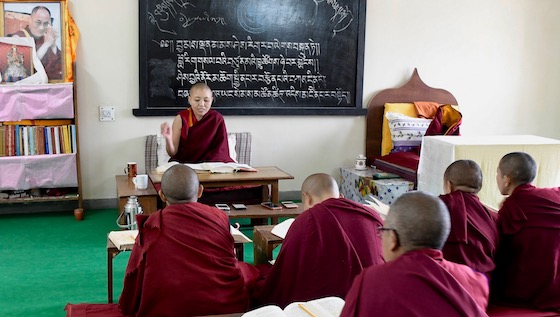

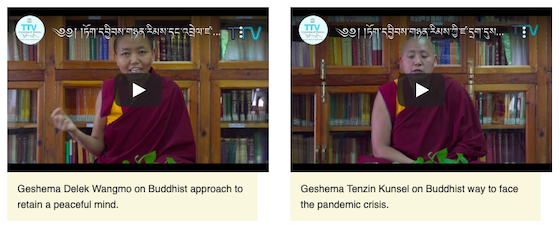
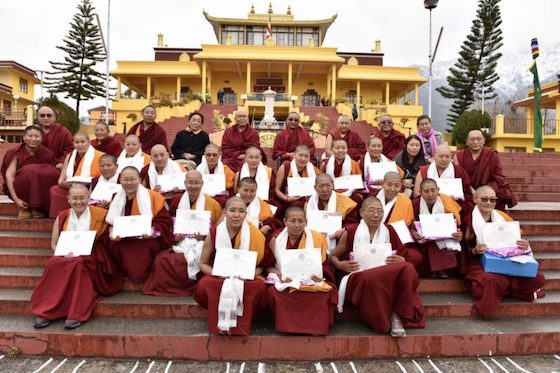
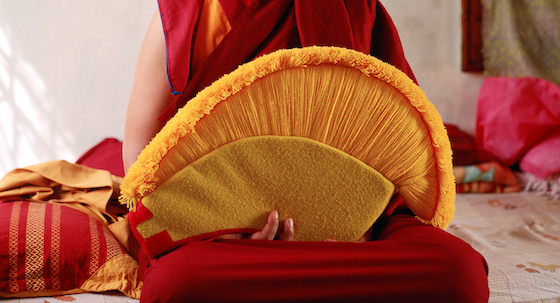
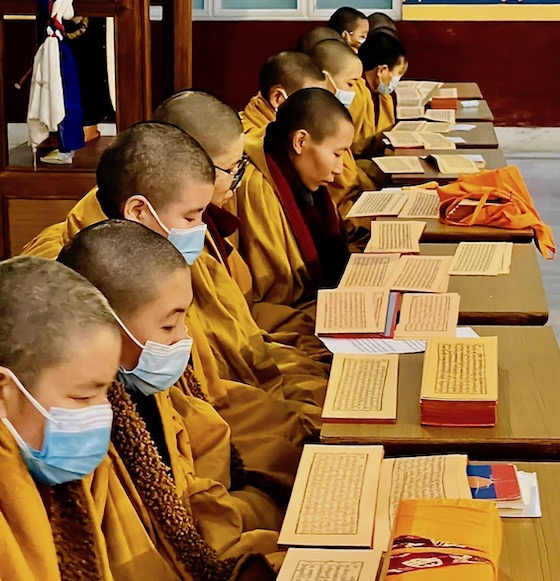
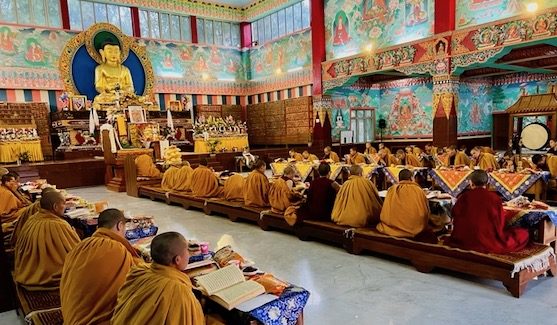
































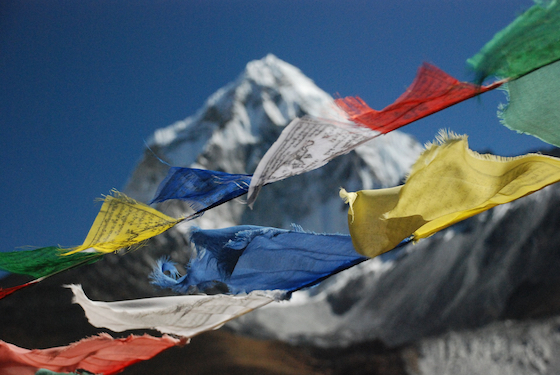 The hanging of prayer flags is a tradition dating back thousands of years to ancient Buddhist India and to the Bon tradition of pre-Buddhist Tibet. Tibetans hang prayer flags at mountain passes and at temples, stupas, and other sacred structures so their prayers can be released.
The hanging of prayer flags is a tradition dating back thousands of years to ancient Buddhist India and to the Bon tradition of pre-Buddhist Tibet. Tibetans hang prayer flags at mountain passes and at temples, stupas, and other sacred structures so their prayers can be released.